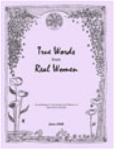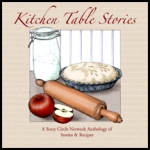It’s time! The day has come. At last, writers can respectably self-publish our own books. Gone are the days of being at the mercy of publishers about content and book title. The two-year waiting period from publisher’s contract to a place on the shelves is over. And we can earn closer to our due for months or years of hard work instead of being paid $1 a book — the usual royalty.
Freedom!
But with that freedom comes a lot of responsibility. To self-publish a quality book we have to hire an editor, a copy editor and a proofreader. We’re in charge of getting the ISBN and related legalities. We need a professional cover designer for the print book and another for the e-book. The interior needs to be designed and the content uploaded to the several digital formats we’ll use for e-publishing. Then there’s distribution and publicity, advertising, review copies to send out, and more. We’re running a business while we’re getting that next book written; you don’t publish a book then rest on your laurels. Successful authors keep an interested audience satisfied.
I faced these facts when I decided to self-publish my book, “100 Years in the Life of an American Girl: True Stories 1910 – 2010.” I turned to Kickstarter, a world-famous online platform for crowdfunding creative projects.
My Kickstarter will help me publish this collection of over 50 first-person stories about the life and times by girls under 13 in each of the last 10 decades. This book is the culmination of my almost 20 years of teaching memoir and the recognition of all the potential there is in our stories. The diverse stories in the book come from all around the country and show a fascinating cultural path. It’s the stuff you’ll never find in history books and what life’s all about.
If funding is successful this book will the first published in the “100 Years in the Life” series. Everyone will have a chance to submit their own stories to future books — about the life and times as a teenager, a woman, or a man — illustrating life as it was in every decade from 1910 to 2010.
And that’s one of the challenges of a Kickstarter. The big “if.”
Kickstarter is an all or nothing funding platform, which means I have to meet my goal by June 24 for any pledges to be paid. It’s fund completely or fold.
I hope you’ll check out my short video at Kickstarter and learn all about this amazing collection of first-person stories about a girl’s life through a century and the series it could launch. For the price of a couple double lattes you can be a part of our great story of changing culture.
In advance, I offer my heartfelt thanks.
_______________
Suzanne Sherman is an author, editor, memoir teacher, consultant and blogger. See www.suzannesherman.com for her free newsletter and more.






